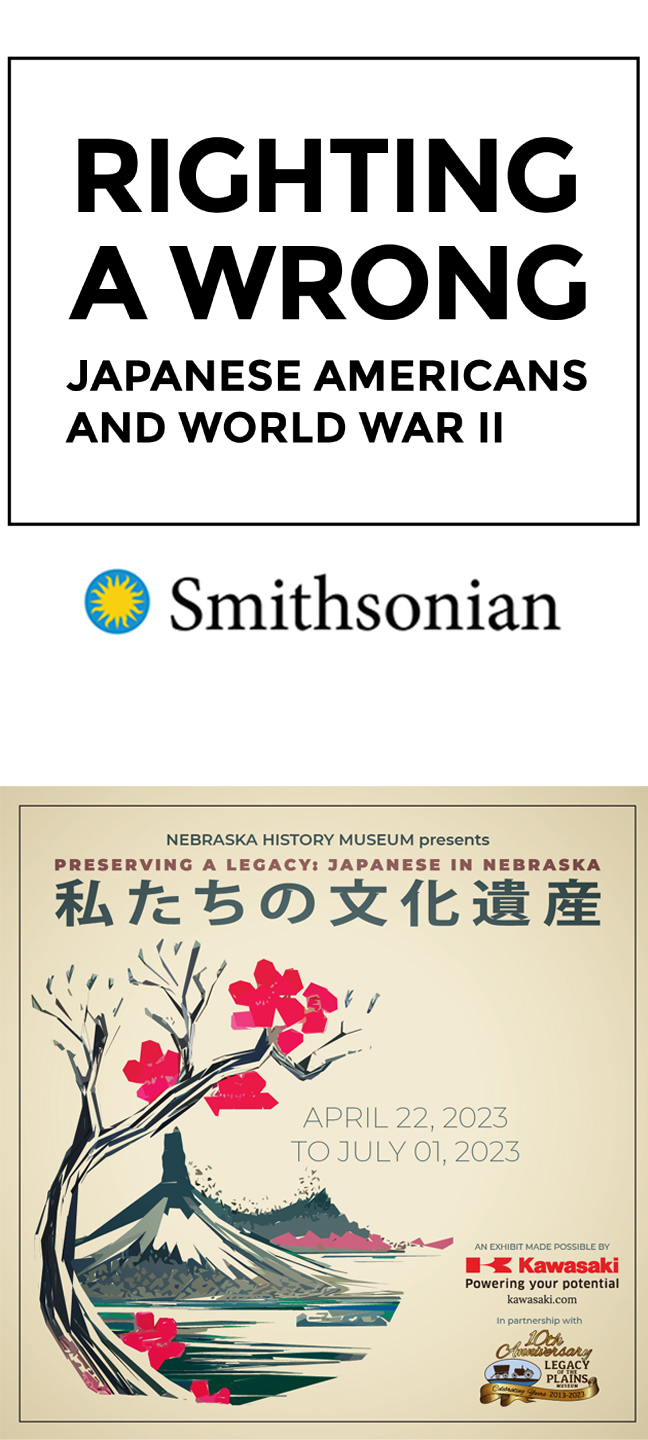Righting a Wrong: Japanese Americans and World War II, a traveling exhibition from the Smithsonian, examines the complicated history and impact of Executive Order 9066 which led to the incarceration of 75,000 Americans of Japanese ancestry and 45,000 Japanese nationals following the attack on Pearl Harbor. Young and old lived crowded together in hastily built camps, endured poor living conditions, and were under the constant watch of military guards for two and a half years. Meanwhile, brave Japanese American men risked their lives fighting for the United States. Some 40 years later, members of the Japanese American community led the nation to confront the wrong it had done—and urged Congress to make it right.
Righting a Wrong: Japanese Americans and World War II was developed by the National Museum of American History and adapted for travel by the Smithsonian Institution Traveling Exhibition Service. The national tour received federal support from the Asian Pacific American Initiatives Pool, administered by the Smithsonian Asian Pacific American Center, the Terasaki Family Foundation, and C. L. Ehn & Ginger Lew.
In partnership with Legacy of the Plains Museum in Gering, we are pleased to present the exhibition “Preserving a Legacy: Japanese in Nebraska” to expand on the story told by the traveling Smithsonian exhibition “Righting a Wrong.” The story of Japanese Americans in Nebraska is filled with hope and support in the state. This exhibit strives to tell these stories.
Japanese immigrants first settled in Hawaii and the Pacific Coast. By 1940, California alone had 93,000 residents of Japanese ancestry. Nebraska then had about 510 residents of Japanese ancestry. About 30 percent were first-generation immigrants, called the Issei. They were not allowed to become U.S. citizens. The other 70 percent were called the Nisei. They were native-born U.S. citizens.
Japanese Nebraskans lived mostly in western farming communities. They worked on farms and in stockyards, in hospitality and domestic service, in professions, and as entrepreneurs. Omaha’s small Japanese community included Harry Watanabe, who founded the Oriental Trading Company in 1932.
Unlike the West Coast, Nebraska Japanese were not incarcerated during World War II, but some lost jobs and community leaders were arrested and questioned. Japanese immigrants were designated “enemy aliens.” Newspapers across the state reprinted warnings that they and their U.S.-born children might act as spies and saboteurs.
Some Nebraskans responded with anti-Japanese hostility. Others spoke against mass incarceration and even hastened the release of those incarcerated by opening jobs to workers and enrollment to students.
Nebraskans of Japanese ancestry have led the way in righting the wrongs of the 1940s, honoring the rights and dignity of all Americans today.
This exhibit is made possible thanks to the partnership with Legacy of the Plains Museum in Gering, NE.
Righting and Wrong and Preserving a Legacy are graciously supported by Kawasaki Motors Manufacturing Corp, U.S.A.


